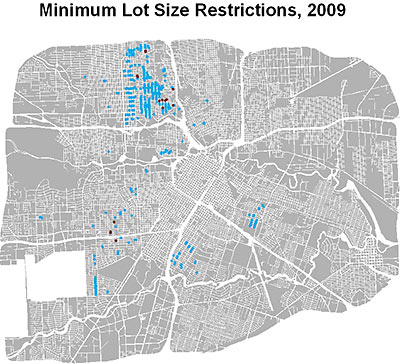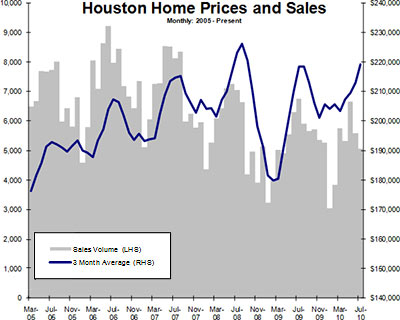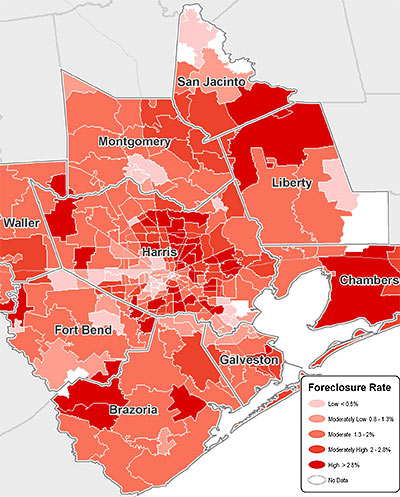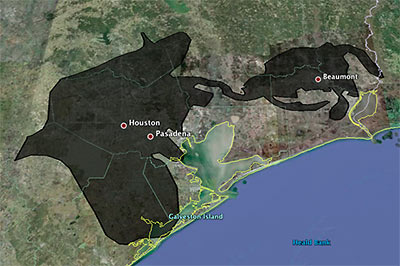
Using data from Houston’s planning department, University of Maryland grad student Chris Dorney has put together a series of diagrams showing which blockfaces in the Inner Loop have restricted lot sizes — and when they’ve done it. His maps start in 2002, when the predecessor to the city’s current Minimum Lot Size ordinance first went into effect. The ordinance allows residents of a single side of a single block to restrict homeowners in that block from subdividing lots below a certain size; its cousin, the Minimum Building Line ordinance, does the same for front setbacks. Dorney explains:
Each [diagram] shows the Inner Loop and indicates blockfaces with special minimum lot size restrictions already in place (red dots) and new for the given year (blue dots) (i.e. blue dots turn red the following year). There are clear spatial patterns to the adoption of these ordinances which it would be interesting to know more about. Perhaps most interesting to people from zoned cities is why every block has not decided to enact such restrictions…a zoning ordinance would likely cover every block uniformly.
And here they are:





